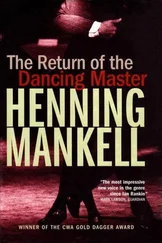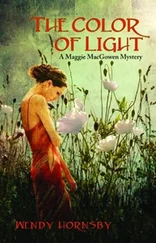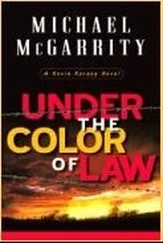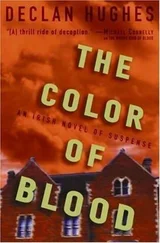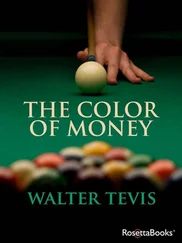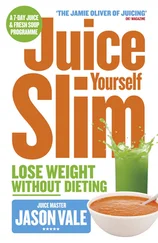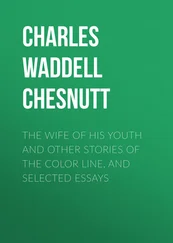“This was all for a quiz ?” I said to her when I went inside, washing trash juice off my hands, and she finished folding up the newspaper into neat rectangles and said she was sure she had no idea what I was talking about.
The following day, after school, we drove half an hour away to the doctor, who was both a specialist in perception and also miraculously covered under our scant insurance. In the waiting room, we sat on different sofas, and my mother read the magazine on brides and I read the one with the weekly news report that has a section in the back about how to raise your kid, which I find hilarious.
“Robertson!” called out the receptionist. I grabbed a handful of hard candies on my way in.
The doctor’s chambers were white-walled and blue-trash-canned and orange-chaired. I ate a cinnamon and a peppermint at once. The doctor strode in with coat and clipboard, and my mother launched into it right away: “Hello there, Doctor, thank you so much for seeing us, my son has this funny thing where he has trouble telling the difference between a group and a person.”
“Well,” chortled the doctor, “isn’t that interesting.”
Her neck was so long it seemed strange that she was a doctor specializing in perception.
“Let’s see what we can discover here,” she said. “Hi, William.”
“Hi.”
She stuck instruments into my eyes. She made me read various letters across the room. She had me close one eye and then the other.
“His vision is fine,” she said, after ten minutes.
“Ah,” said my mother.
I chomped down on a butterscotch, and a little shard of gold sugar flew up and stuck on the doctor’s white coat collar.
“Sorry,” I said.
She brushed off her coat and put a few slides up on the wall and had me explain them: Does the line appear to be wavy? It’s really straight. Does the circle above appear to be smaller? It’s really the same size as the one below. “But doesn’t everyone have these perception problems?” I asked, after identifying both the witch and the young girl in the same drawing of a face. “True,” she said. “Sure. But they’re fun to look at, aren’t they?”
She turned the slide projector off and rummaged in a drawer, returning with a photograph of a group of people.
“Let’s try this,” she said. “William, who are these people?”
“They’re a group of people,” I said.
She bobbed her head. “Mmm-hmmm. Okay. And what do these people do?”
“They’re all nurses,” I said.
“That’s right!”
I pointed to the bottom of the photo, where it said Nurse Convention on a black plaque in big white letters.
She nodded; her neck was so long that a nod for her took about four seconds to complete.
“And what can you tell me about any of the people in the picture?”
“They’re all nurses,” I said again.
“And how are they different?”
“They’re different heights,” I said.
“Okay.” She looked in my ear while I was talking.
“My ears feel fine,” I said.
“She’s checking your balance,” whispered my mother, sitting perfectly still in a stiff orange chair in the corner.
The doctor straightened the photo in front of me.
“Now, William,” she said, “can you tell me if any of the nurses are older than the others?”
“What do you mean?”
“I mean, are there elderly nurses in the photo?”
I peered at it. They all looked pretty old to me. I found one with white hair.
“This one seems old,” I said. “He has white hair.”
She looked over my shoulder at the photo. “Okay,” she said. “Good. And you can tell that it’s a man there.”
“Yes,” I said. “It’s an old man nurse, right there.”
“And what else can you tell me about them?”
“Nothing much,” I said. “A bunch of nurses in a photo. For a convention.”
She returned to the drawer and brought out another picture. The second photo was of a bunch of young men in the army.
“Soldiers,” I said, pleased with myself. I could tell from the camouflage clothing.
“Okay,” she said. “And?”
“And what?”
“And … how are they different?”
“What do you mean?” I asked. “From each other? They’re all soldiers.”
“For example,” she said, “are some happy?”
I looked at it again. They were moving around, some of them. “Sure,” I said. “I suppose some are.”
“Can you tell?”
“Not really,” I said. “You can’t ever tell for sure if someone’s happy or not.”
She pointed to the corner with her fingertip. “What about this one here?”
“What about him?”
“How is he doing?”
I peered closely at his face. “I don’t think he looks too good,” I said. “His expression is weird.”
The doctor blew her nose into a tissue. “He’s getting shot,” she said.
“Oh,” I said. “Huh. I didn’t see that part yet.”
“You didn’t see his torso?”
“No,” I said. “I was looking at his face, like you asked. Now that I look at his body, I can see that he is getting shot.”
“And so is he happy?”
“Well, I certainly doubt it,” I said. “I’m not a moron.”
“And are any of them dead?”
I looked again at the photo. It took me a long time. Several of the soldiers were lying down. One of the ones lying down had his face in the dirt.
“This one could be dead,” I said, after about five minutes. “But maybe he’s sleeping.”
She unscrewed the earpiece from her instrument and took the photo out of my hands. “Thank you, William,” she said. “Fine. Let’s take a break and try something else for a minute. Of your friends at school, whom do you like the best?”
I could actually hear my mother’s jaw stiffen behind me.
“I like them the same,” I said.
“Really?” she asked.
“Really.”
“And do you have friends at school?”
“I just said so, didn’t I? I have a couple of groups I float between; I’m not really in one main group.”
“And can you tell the two groups from each other?”
“Of course,” I said, ripping up the corner of the papery doctor-visit shirt.
“How?”
“They sit in different parts of school,” I said.
“I see,” said the doctor. “And is there a leader in these groups?”
“They change around,” I said.
I turned and glared at my mother. She had her head down, her eyes on the wall, the ceiling, the floor.
“Can we move on, Doc?” I asked. “Any more photos?”
The doctor wrote something on her clipboard and returned to the drawer to take out another picture, this one of a family. I wasn’t sure why she had all these group pictures in her drawer, but maybe she saw people like me all the time.
“How about them?” she asked.
“Yes?”
“What can you tell me about them?”
“They’re all black,” I said. “I can see that.”
“Can you pick out the grandfather?”
I looked for a while. No one had white hair. “No.”
“Can you pick out the baby?”
I looked for a while again, and finally I found a baby stroller, off in the corner.
“There,” I said. “A baby.”
“Can you find the young man?”
I stared at it, but I couldn’t find the young man any more than I could tell who was the grandfather. And just because someone was old didn’t mean he was a grandfather anyway.
“No,” I said. “And it’s not because I’m racist.”
She brought out a similar photo of a family of white people. All I got was the shape of the group made by their heights and the positions of arms and feet.
“This one is sitting,” I said, pointing.
The doctor looked at my mother now. They exchanged a meaningful look.
Читать дальше

